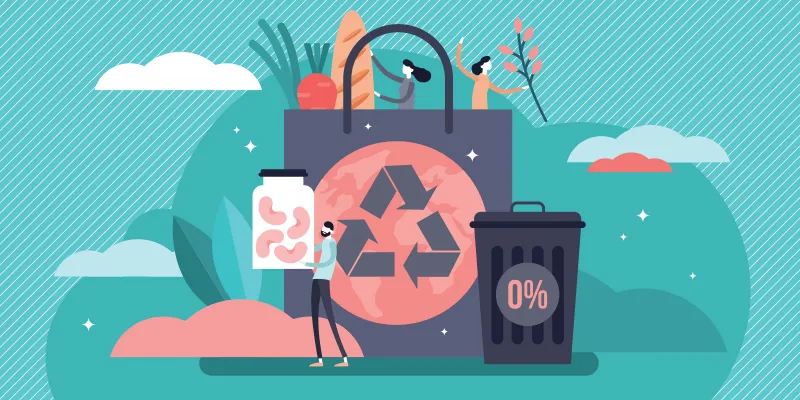Six ways to reduce your carbon footprint while at home
Amidst the third COVID-19 wave, people are again back to spending more time at home. With climate change looming large, here’s how you can reduce your carbon footprint at home.
Last year, at the Glasgow COP26 UN climate conference, India pledged to reduce the total projected carbon emission by one billion tonnes between now and 2030. The country will also work towards becoming carbon neutral and achieving net-zero emissions by 2070.
Simply put, a carbon footprint is the total amount of greenhouse gases emitted from the production, use, and end of a product or service. These gases include carbon dioxide — the most commonly emitted gas by humans — methane, nitrous oxide, and fluorinated gases, which trap heat in the atmosphere causing global warming.
Amidst the third COVID-19 wave, people are again back to spending more time at home. With climate change looming large, they can enforce several actionable steps in their daily lives to save the planet.
SocialStory has curated six sustainable ideas to reduce your carbon footprint at home.

Use less water
With each passing year, drinking water is getting precious. Moreover, it takes a lot of energy and resources to process and deliver safe drinking water to our homes. In fact, reports suggest heating water is energy-intensive.
Try turning off the taps while brushing your teeth; have short showers than baths; make sure the smallest leak is repaired without much delay, and boil the water you actually need.
Change your diet
Food items, such as meat and dairy products, require land, water, feed, and energy to produce in bulk. They also create methane, a greenhouse gas. While food systems are complicated, experts mostly agree that cutting down on meat, especially red meat, helps reduce our carbon footprint.
Moreover, fossil fuels used in food transportation and fertiliser production also add up to the carbon footprint. You can opt for locally-sourced organic food rather than food shipped from overseas, which uses a lot more resources than local produce.
Eliminate single-use plastic
Single-use plastics may be convenient, yet they are dreadful for the environment. Besides polluting our waterways and oceans, they require energy to produce and recycle.
Putting a stop to single-use plastics, including disposable coffee cups, straws, cutlery, etc., and using reusable utensils can help reduce carbon footprint at home.

Reduce, reuse, recycle
At home, we often use a host of products in our daily lives. By reducing the amount of waste generated and recycling them, one can make a real difference.
One of the key steps is to organise your refrigerator regularly to track inventory before making a shopping list, thereby preventing buying things you don’t need.
Don’t cook more food than you can eat. Adapt recipes to your needs, and reuse the leftovers instead of discarding them.
Turn off the lights
Keeping electrical appliances like lights, fans, switches, etc., in empty rooms is a huge energy drain. By ensuring to turn off all the lights and appliances when not in use, you are making sure you’re not wasting power.
Turn off appliances at the power outlet to reduce even more energy. Putting them to sleep is second best. You could also request to install automatic, movement-sensing lights and energy-saving LED bulbs to address the issue.
You can also switch to companies that provide electricity from solar, wind, or hydroelectric energy, which can reduce your household emissions and save money on energy bills.
Go digital
It’s never been easier before to collaborate with others online. Whether through sharing documents using cloud storage or video conferencing instead of travelling, you can reduce your waste and carbon emissions.
Avoid asking for unnecessary printed receipts; try moving away from printed documents where possible, and encourage others to work on their digital skills.
Edited by Suman Singh


![[Sustainability Agenda] This startup aims to make travel to Northeast India carbon neutral](https://images.yourstory.com/cs/5/54bfb360112e11ecbdb4b127003811f4/CopyofImageTagsEditorialTeamMaster8-1634747245572.jpg?fm=png&auto=format&h=100&w=100&crop=entropy&fit=crop)
![[Sustainability Agenda] This 12-year-old’s NGO has recycled over 1.5 lakh batteries to make Earth a better place](https://images.yourstory.com/cs/5/79900dd0d91311e8a16045a90309d734/sntfeat-1642649094487.jpg?fm=png&auto=format&h=100&w=100&crop=entropy&fit=crop)




